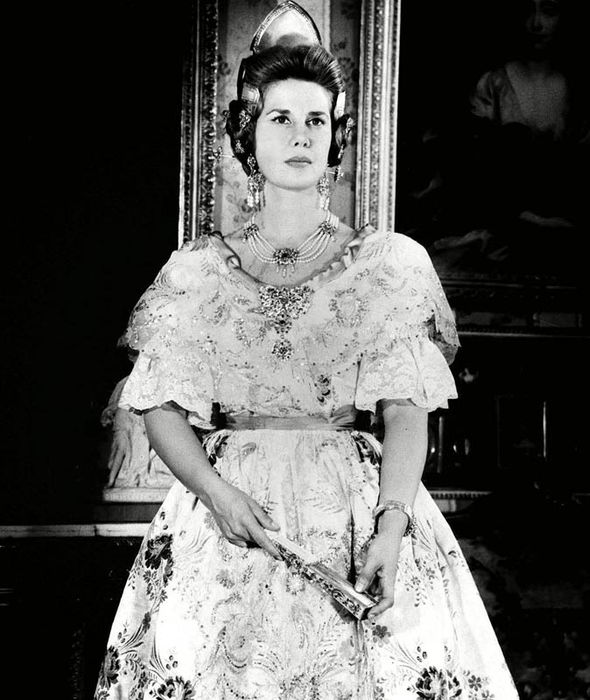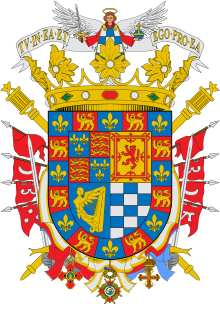Cayetana Fitz-James Stuart y Silva, the Duchess of Alba, has died at the age of 88 in Seville.
The holder of 14 Grandezas de España titles, the highest rank in Spanish nobility, she was the head of the House of Alba and a well-known society figure. But, above all, she was a unique, incomparable individual who left no one indifferent.
Though born in Madrid’s Liria Palace, she always enjoyed stepping out on to the street and challenging convention. And she did so until the end of her days, marrying for the third time just three years ago.
“If I don’t poke my nose into anyone else’s life, they shouldn’t poke their nose into mine,” she argued ahead of marrying Alfonso Díez, with whom she celebrated her third wedding anniversary on October 5. Her children initially opposed the union but everything changed when the House of Alba estate was settled and the details of how all its assets, businesses, land and properties – worth over €3 billion – were to be shared out was laid down in writing, along with the fact that the latest Duke of Alba would renounce almost everything. There is a saying that the Duchess of Alba, is she desired, could walk from Southern Spain to Northern Spain without ever walking on public land.
Cayetana de Alba chose to divide her inheritance unequally between her six children – Carlos, Alfonso, Jacobo, Fernando, Cayetano and Eugenia – all born from her marriage to Luis Martínez de Irujo. The two eldest, Carlos and Alfonso, are left in charge of the House of Alba Foundation, obliged to preserve and maintain its historical legacy.
Maintaining the House of Alba legacy was one of the duchess’s greatest concerns. Her big supporter in this task was her second husband, Jesús Aguirre, who restored part of the art collection in collaboration with Rafael Alonso of the Prado Museum, which since 1978 has taken on the task of looking after the House’s great works.
Besides their estates, the Alba family owns one of the finest and largest art collections in private Spanish hands, reaching back five centuries to the origins of the family. It also includes Impressionist paintings and other works acquired far more recently by the duchess herself.
Much of the collection sits in the Liria Palace in Madrid. It includes historic books and documents, most notably Christopher Columbus’s first map of the Americas. As part of Spain’s national patrimony, the collection could not be divested by the duchess or her heirs without the Culture Ministry’s permission.
She was born at Liria Palace on 28 March 1926, as the only child of the 17th Duke of Alba (a prominent politician and diplomat during the 1930s and 1940s), and his wife, María del Rosario de Silva y Gurtubay, 9th Marchioness of San Vicente del Barco. Her godmother was the Queen Consort of Spain, Victoria Eugenie of Battenberg, King of Spain Alfonso XIII de Borbón’s wife.
The matriarch’s senior title was Duchess of Alba, but she had more than 40 others. According to Guinness World Records, she had more titles than any other noble in the world.
Through the male-preference primogeniture from James FitzJames, she also claimed the title of Duchess of Berwick. She was a direct descendant of King James II of England, through his illegitimate son James FitzJames, 1st Duke of Berwick by his mistress Arabella Churchill.
She was said to be one of two main contenders from the Stuart dynasty, whose Scottish monarchs transformed the country during their time in power.
The Duchess of Alba might have argued she had the strongest claim. During the Scottish referendum, First Minister Alex Salmond always insisted that Queen Elizabeth II would remain as head of state after a Yes vote but others were not so sure. Some Scots looked back fondly in the history books to their Stuart kings, the first of whom was Robert II in 1371.
By the 17th century, they ruled all of England, Wales, Ireland and Scotland. In 1603, James VI of Scotland became James I in London, unifying the two crowns. His son Charles I was executed and Charles II ascended to the thrones after Oliver Cromwell’s inter-regnum. Charles II’s brother, Roman Catholic James II, then ruled until the Glorious Revolution saw him depart the British Isles.

The last Stuart monarch was Queen Anne, who died childless in 1714.
The Crown passed to the House of Hanover, but the Stuart line continued abroad...
Titles :
Dukedoms
18th Duchess of Alba, Grandee of Spain
15th Duchess of Aliaga, Grandee of Spain -Ceded to her son Don Alfonso
13th Duke of Almazán, Grandee of Spain -obtained in 2013
4th Duchess of Arjona, Grandee of Spain -Ceded to her son Don Cayetano
11th Duchess of Berwick, Grandee of Spain (Jacobite Peerage)
17th Duchess of Híjar, Grandee of Spain -Ceded to her son Don Alfonso
11th Duchess of Liria and Jérica, Grandee of Spain
11th Duchess of Montoro, Grandee of Spain -Ceded to her daughter Doña Eugenia
Count-Dukedoms
12th Countess-Duchess of Olivares, Grandee of Spain
Marquessates
17th Marquise of the Carpio, Grandee of Spain
10th Marquise of San Vicente del Barco, Grandee of Spain -Ceded to her son Don Fernando
16th Marquise of La Algaba
16th Marquise of Almenara -Ceded to her son Don Alfonso
18th Marquise of Barcarrota
10th Marquise of Castañeda
23rd Marquise of Coria
14th Marquise of Eliche
16th Marquise of Mirallo
20th Marquise of la Mota
20th Marquise of Moya
17th Marquise of Orani -Ceded to her son Don Alfonso
12th Marquise of Osera
14th Marquise of San Leonardo
19th Marquise of Sarria
12th Marquise of Tarazona
15th Marquise of Valdunquillo
18th Marquise of Villanueva del Fresno
17th Marquise of Villanueva del Río
Countcies
27th Countess of Aranda, Grandee of Spain -Ceded to her son Don Alfonso
22nd Countess of Lemos, Grandee of Spain
20th Countess of Lerín, Grandee of Spain, Constabless of Navarre
20th Countess of Miranda del Castañar, Grandee of Spain
16th Countess of Monterrey, Grandee of Spain
20th Countess of Osorno, Grandee of Spain
18th Countess of Palma del Río, Grandee of Spain -Ceded to her son Don Alfonso
12th Countess of Salvatierra, Grandee of Spain -Ceded to her son Don Cayetano
22nd Countess of Siruela, Grandee of Spain -Ceded to her son Don Jacobo
19th Countess of Andrade
14th Countess of Ayala
16th Countess of Casarrubios del Monte
16th Countess of Fuentes de Valdepero
11th Countess of Fuentidueña
17th Countess of Galve
18th Countess of Gelves
16th Countess of Guimerá -Ceded to her son Don Alfonso
21st Countess of Modica (Kingdom of Sicily)
24th Countess of Ribadeo -Ceded to her son Don Alfonso
25th Countess of San Esteban de Gormaz
12th Countess of Santa Cruz de la Sierra
20th Countess of Villalba
Viscountcies
12th Viscountess of la Calzada
Honours
Dame Grand Cross of the Civil Order of Alphonso X the Wise (14 December 2001).
Dame Grand Cross of the Civil Order of Agricultural Merit (29 March 1974)
Dame Grand Cross of the Royal Order of Isabella the Catholic (1 April 1964)
Dame Grand Cross of the Civil Order of Charity (5 April 1962)
Dame Grand Cross of the Order of Beneficence (1962).
Dame Grand Cross of Justice of the Sacred Military Constantinian Order of Saint George (1961).
Honorary appointments
Constable of Aragon
Dame of the Royal Cavalry Armory of Seville
Honorary Mayor of Liria (Madrid)
Honorary President of the Opera Philharmonic
Honorary President of the Spanish Red Cross
Marshal of Castilla
Member of the Hispanic Society of America, New York
Member of Merit of the Royal Hispanic-American Academy of Arts, Sciences and Letters of Cádiz